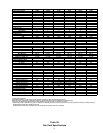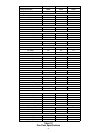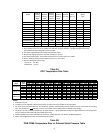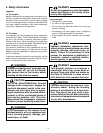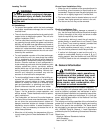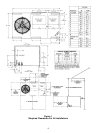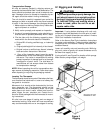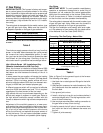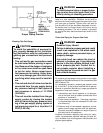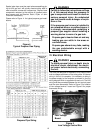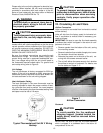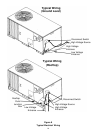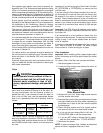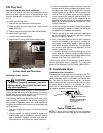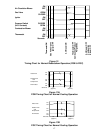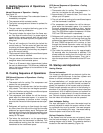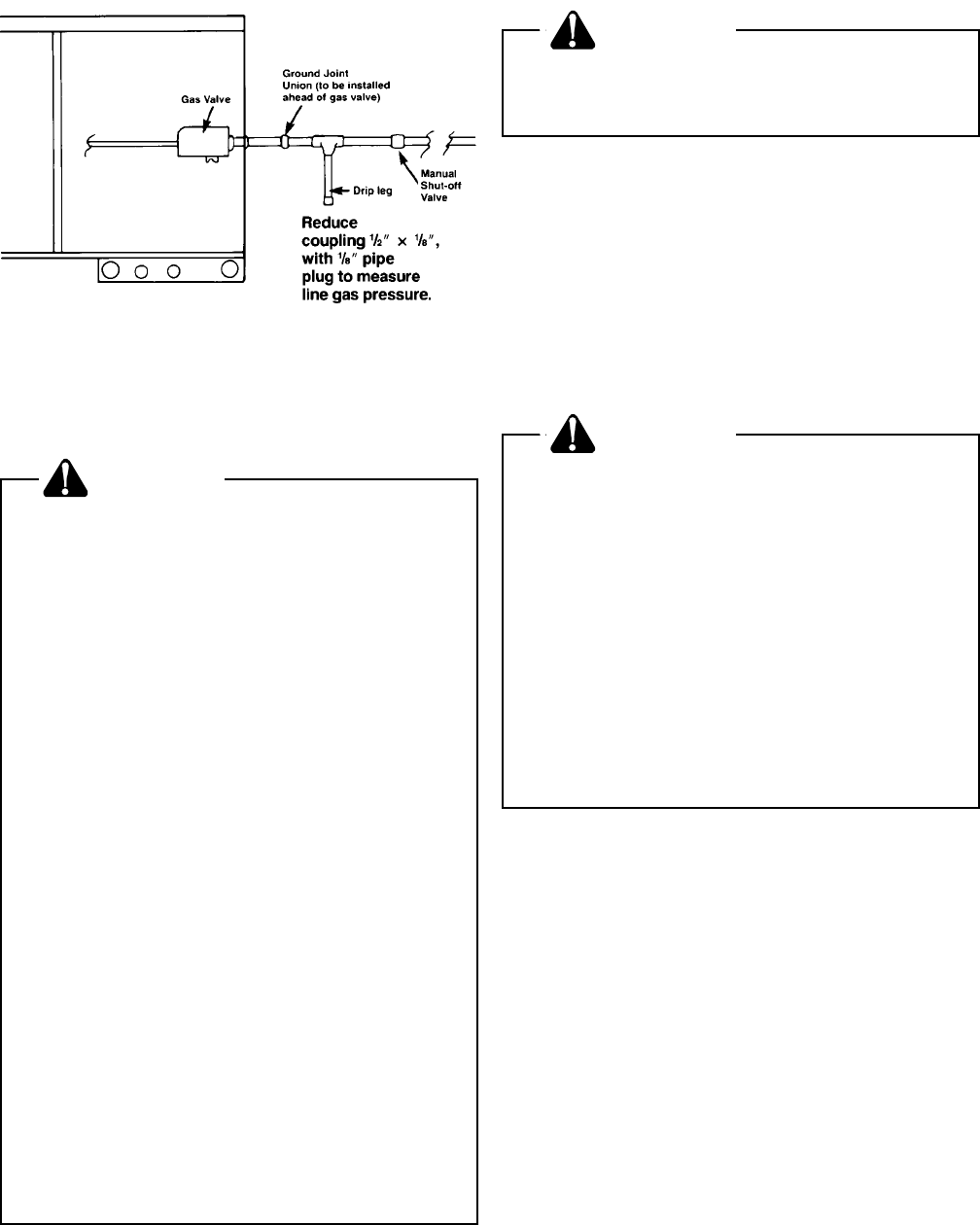
11
Figure 3
Proper Piping Practice
Checking The Gas Piping
CAUTION
To avoid the possibility of personal in-
jury, property damage or fire, the follow-
ing instructions must be performed re-
garding gas connections and pressure
testing:
• This unit and its gas connections must
be leak tested before placing in opera-
tion. Because of the danger of explosion
or fire, never use a match or open flame
to test for leaks. Never exceed speci-
fied pressures for testing. Higher pres-
sure may damage gas valve and cause
overfiring which may result in heat fail-
ure.
• This unit and shut-off valve must be dis-
connected from the gas supply during
any pressure testing of that system at
test pressures in excess of 1/2 PSIG
(3.48 kPa).
• This unit must be isolated from the gas
supply system by closing the manual
shut-off valve during any pressure test-
ing of the gas supply piping system at
test pressures equal to or less than 1/2
PSIG (3.48 kPa).
WARNING
To avoid personal injury or property dam-
age, be sure there is no open flame in the
vicinity during air bleeding procedure.
There will be air in the gas supply line after testing for
leaks on a new installation. Therefore, the air must be
bled from the line by cracking open the ground joint union
until pure gas is expelled. Tighten union and wait for
five minutes until all gas has been dissipated in the air.
Be certain there is no open flame in the vicinity during
air bleeding procedure. The unit is placed in operation
by closing the main electrical disconnect switch for the
furnace.
Tanks And Piping for Propane Gas Units
WARNING
Personal Injury Hazard
Failure to detect a propane gas leak could
result in an explosion or fire which could
cause death, serious personal injury, or
property damage.
Iron oxide (rust) can reduce the level of
odorant in propane gas. A gas detecting
device is the only reliable method to de-
tect a propane gas leak. Contact the lo-
cal propane supplier about installing a
warning device to sound an alert if a gas
leak should develop.
All propane gas equipment must conform to the safety
standards of the National Board of Fire Underwriters (See
NBFU Manual 58).
For satisfactory operation, propane gas pressure must
be 10 inch W.C. at the furnace manifold with all gas ap-
pliances in operation. Maintaining proper gas pressure
depends on three main factors:
1. Vaporization rate, which depends on (a) tempera-
ture of the liquid, and (b) wetted surface area of the
container or containers.
2. Proper pressure regulation. (Two-stage regulation
is recommended from the standpoint of both cost
and efficiency.)
3. Pressure drop in lines between regulators, and be-
tween second stage regulator and the appliance.
Pipe size required will depend on length of pipe run
and total load of all appliances.
Complete information regarding tank sizing for vapor-
ization, recommended regulator settings and pipe siz-
ing is available from most regulator manufacturers and
propane gas suppliers.



